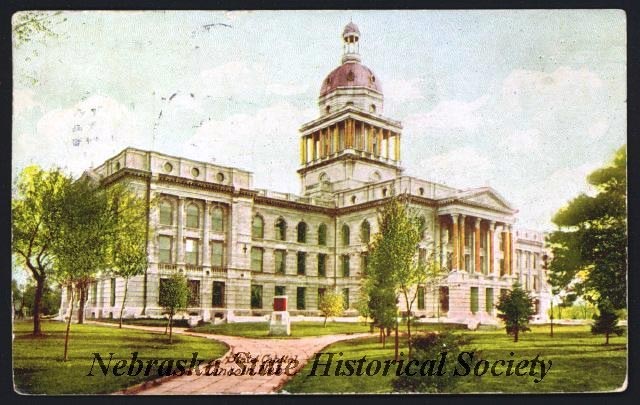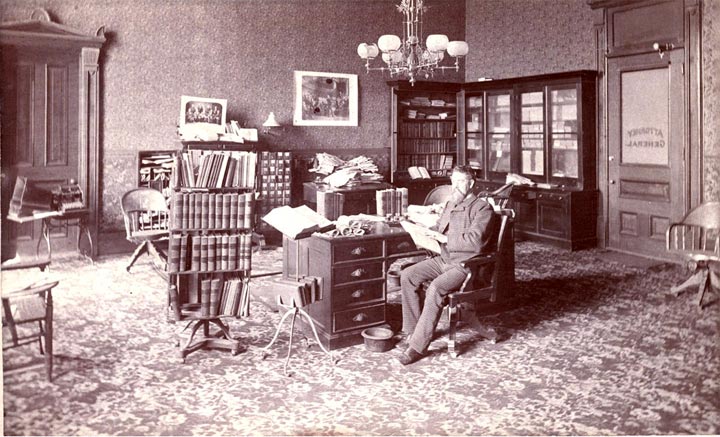An official review of Nebraska state expenditures in early 1908 uncovered several questionable purchases. The Nebraska State Journal on January 28, 1908, noted that the state auditor had recently “held up a claim from a department of the university for private laundry bills of two state employees. The heads of the departments through whose hands the bill passed said a contract had been made whereby the laundry bill was to be a part of the compensation of the two employees and that students of that department paid in fees enough to cover all such costs, the fees being turned into the state treasury. A laundry bill for towels was also questioned.”
It was also discovered in 1908 that the auditor was paying for mineral water for himself and other state officials as well as the laundry bill for towels furnished in state offices. The Journal said: “While some state officers and all the people of Lincoln were drinking hydrant water from the city system, bills for mineral water for state officers were being approved and allowed by Secretary of State Junkin and Auditor Searle.
“The bills for mineral water for state officers are still being allowed, but the laundry bill of the two employees of the university department of home economics is still flapping in the breeze.
“If the state furnishes mineral water to its officers and employees, why cannot it furnish free laundry? This question has been asked and some of the departments in the state house have stopped buying drinking water or pay for it out of their private funds.”
The use of mineral water in the Capitol was said to be necessary because “the tanks on top of the state house [Nebraska’s second] through which water runs before it is used in the offices becomes filthy and some fear to use the water. Land Commissioner Eaton says this cannot be possible because the tanks are closed boiler-like structures of iron and that they are cleaned by flushing twice each month.” Even if water used in the Capitol was impure, the Journal said, janitors could still carry fresh water in from hydrants near the building, thus saving the state the expense of paying for mineral water.
The Second State Capitol, begun in 1879, was criticized almost as soon as it was completed ten years later for its poor quality and defects that included a crack in the south wall of the east wing caused by the breaking of an arch over an old sandpit. The building was eventually replaced by a third Capitol, completed in 1932.

The Second Nebraska State Capitol. NSHS RG2158.PH12-29

The attorney general’s office in the Second Capitol. NSHS RG1234.PH12-6



